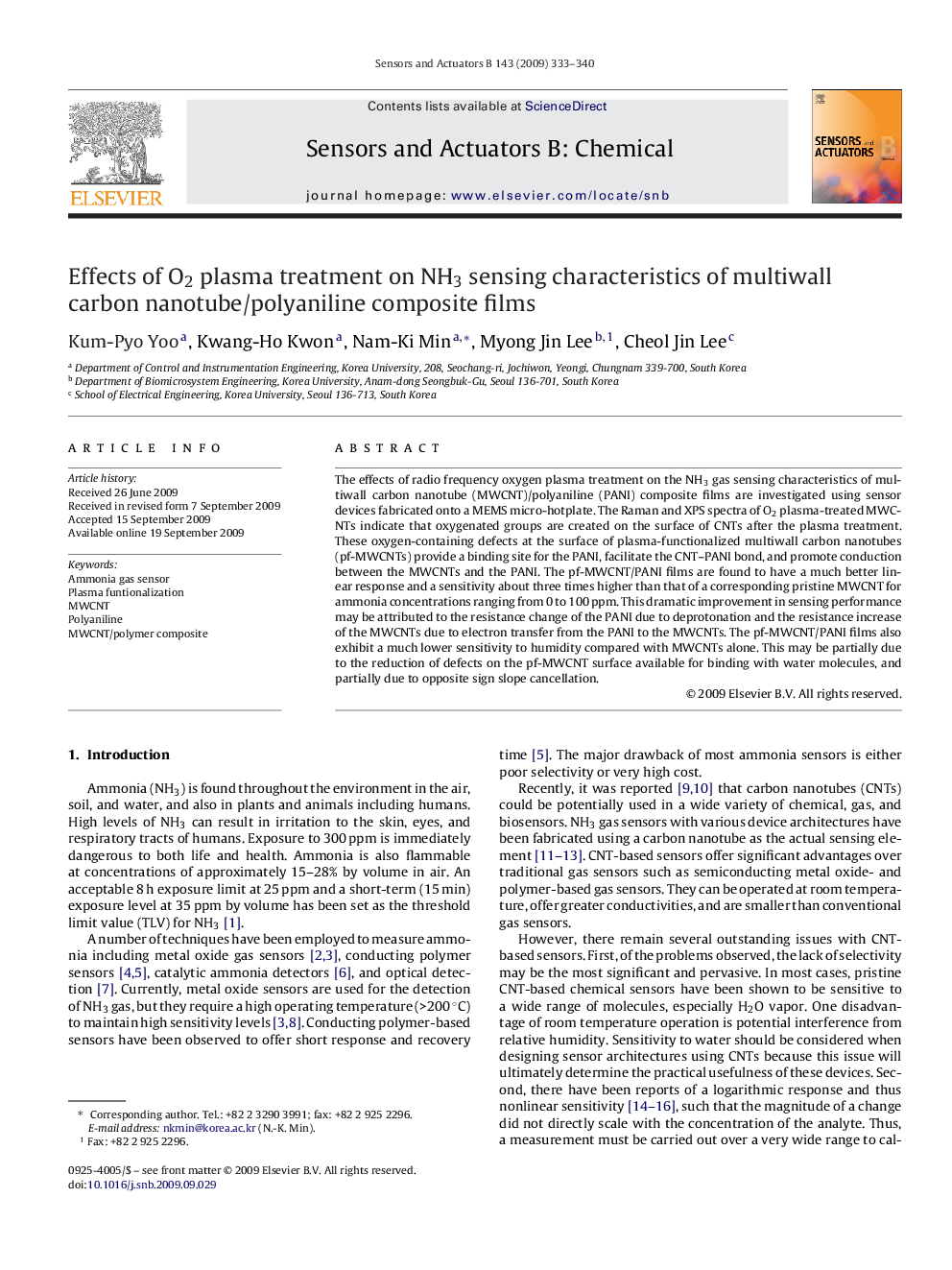| Article ID | Journal | Published Year | Pages | File Type |
|---|---|---|---|---|
| 746359 | Sensors and Actuators B: Chemical | 2009 | 8 Pages |
The effects of radio frequency oxygen plasma treatment on the NH3 gas sensing characteristics of multiwall carbon nanotube (MWCNT)/polyaniline (PANI) composite films are investigated using sensor devices fabricated onto a MEMS micro-hotplate. The Raman and XPS spectra of O2 plasma-treated MWCNTs indicate that oxygenated groups are created on the surface of CNTs after the plasma treatment. These oxygen-containing defects at the surface of plasma-functionalized multiwall carbon nanotubes (pf-MWCNTs) provide a binding site for the PANI, facilitate the CNT–PANI bond, and promote conduction between the MWCNTs and the PANI. The pf-MWCNT/PANI films are found to have a much better linear response and a sensitivity about three times higher than that of a corresponding pristine MWCNT for ammonia concentrations ranging from 0 to 100 ppm. This dramatic improvement in sensing performance may be attributed to the resistance change of the PANI due to deprotonation and the resistance increase of the MWCNTs due to electron transfer from the PANI to the MWCNTs. The pf-MWCNT/PANI films also exhibit a much lower sensitivity to humidity compared with MWCNTs alone. This may be partially due to the reduction of defects on the pf-MWCNT surface available for binding with water molecules, and partially due to opposite sign slope cancellation.
